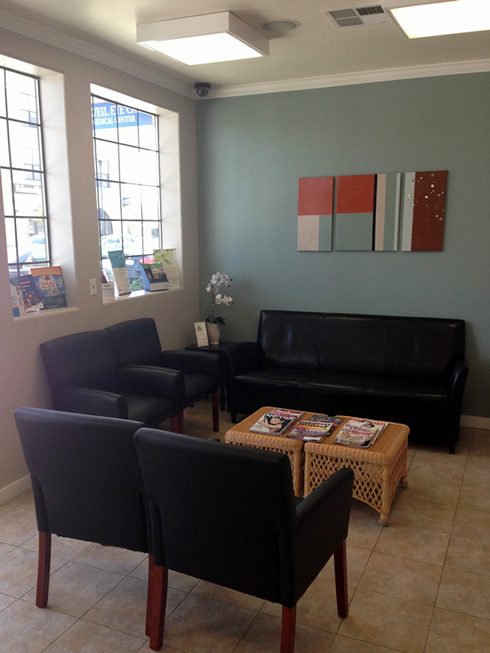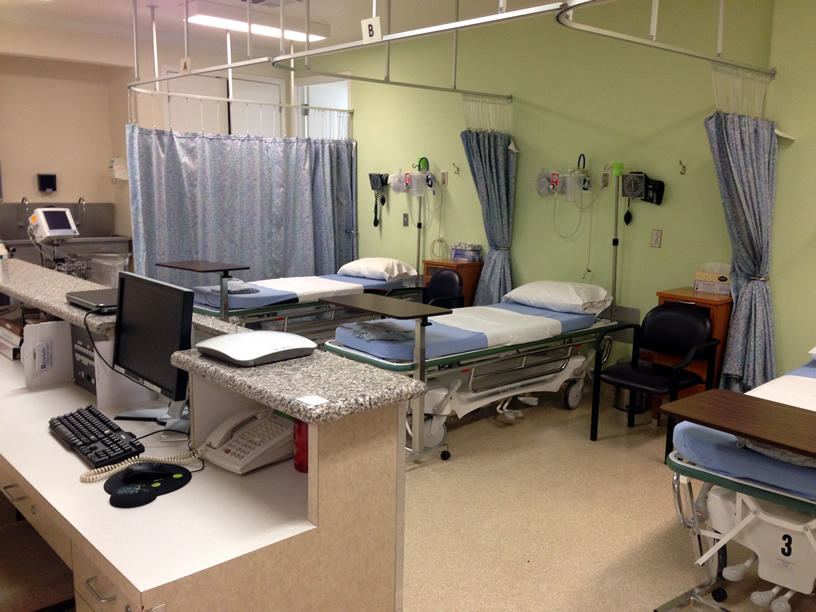Recommended Diets
Dr Scott Levenson and Dr Roger Kao may recommend special diets for your condition:
Helpful Websites
Dr Scott Levenson and Dr Roger Kao recommend these websites for general information.

Remember to relax the day before your procedure and get a good night sleep.
Preparing For Your Visit With Dr Scott Levenson and Dr Roger Kao
 We look forward to meeting you in our office for your gastroenterology consultation. Please click the link below and print out our Patient Registration Form. Please complete documents beforehand and bring in to your visit along with a photo ID and current insurance card.
We look forward to meeting you in our office for your gastroenterology consultation. Please click the link below and print out our Patient Registration Form. Please complete documents beforehand and bring in to your visit along with a photo ID and current insurance card.
![]() Patient Registration Form
Patient Registration Form
Below is a list of possible preparations your doctor will ask you to follow prior to your procedure. It is very important to follow the directions carefully to ensure a complete exam. In order to view these preparation pages you will need the Adobe Acrobat© Reader. ![]() Procedure Consent Form
Procedure Consent Form
![]() Colonoscopy - Prepopik
Colonoscopy - Prepopik
![]() Colonoscopy - PEG-3350
Colonoscopy - PEG-3350
![]() Colonoscopy - Moviprep
Colonoscopy - Moviprep
![]() Colonoscopy - Osmoprep
Colonoscopy - Osmoprep
![]() Capsule Endoscopy Patient Instructions
Capsule Endoscopy Patient Instructions
![]() Upper Endoscopy
Upper Endoscopy
![]() ERCP
ERCP
![]() Sigmoidoscopy
Sigmoidoscopy
Patient rights forms for patients of Digestive Care Medical Group:

Gastroenterology Procedure Profiles
Upper Endoscopy (EGD)
An upper endoscopy allows your physician to examine the lining of your esophagus, stomach and duodenum (first part of the small bowel). This procedure is performed with an endoscope, which is a small flexible fiber-optic tube. The images are viewed on a video monitor. This is also called an EGD (esophagogastroduodenoscopy).
Why have an upper endoscopy?
Upper endoscopy is typically performed to help evaluate abdominal pain, nausea, vomiting or problems with swallowing. It is also used commonly for detecting bleeding in the upper GI tract.
Colonoscopy
A colonoscopy allows examination of the lining of your colon and rectum (the large intestine). This is performed with a flexible fiber-optic tube about the size of your finger. The test is performed while you lie on your side or back after you have received sedation. The doctor guides the scope through your large intestine. The procedure typically takes from 10-30 minutes.
Why have a colonoscopy?
This procedure is performed for multiple reasons including colorectal cancer screening, evaluation of abdominal pain, bleeding, diarrhea or constipation. Colorectal cancer screening looks for polyps in the colon. Polyps are abnormal growths in the colon that are typically benign (non-cancerous). Polyps can eventually become malignant (cancerous) and therefore your doctor will sample or remove any polyps seen during your colonoscopy.
What type of preparation is involved?
Please see link to our preparations page for details. Typically you will need to be off all anti-coagulants, aspirin or NSAID type medications 5 days prior to your colonoscopy. The day before your test your doctor will usually instruct you to be on a clear liquid diet and take either a large volume cleansing solution or special laxatives. Your doctor will give you specific instructions on which prep is right for you. It is very important to follow the instructions carefully as your colon needs to be clean for an accurate and complete examination.
What are the possible complications?
Colonoscopy is a generally safe procedure when performed by specially trained doctors. Possible complications include bleeding following removal of a polyp, perforation or tear in the colon or sedation related complications. Although complications are rare it is important to recognize them early. Your doctor will give you written instructions following the procedure that includes a list of symptoms and signs that should prompt you to get medical attention.
Capsule Endoscopy
Wireless capsule endoscopy involves a special capsule that contains a tiny camera that takes pictures of your intestines after you swallow it. This enables your doctor to look at the entire small intestine. Before this technology was available the only way to fully look at the lining of the small intestine was with invasive procedures such as surgery. The capsule sends the images to a recorder that you wear for eight hours after swallowing the capsule. The images are then downloaded to a computer and your doctor will then evaluate the images. The capsule takes close to 60,000 images during the exam.
Why have a capsule endoscopy?
Capsule endoscopy is commonly used to evaluate gastrointestinal bleeding which has been difficult to diagnose. Usually patients have had multiple negative upper endoscopies and colonoscopies. Other indications are evaluation for inflammatory bowel disease (Crohns disease), abdominal pain or evaluation for small bowel tumors.
More information is available on the given imaging website: http://www.givenimaging.com/Cultures/en-US/given/english
Flexible Sigmoidoscopy
A flexible sigmoidoscopy allows examination of the lining of your colon and rectum (the large intestine). This is performed with a flexible fiber-optic tube about the size of your finger. Sigmoidoscopy is able to evaluate the last third of your colon as compared to a colonoscopy, which looks at the entire colon.
Why have a sigmoidoscopy?
Sigmoidoscopy is typically performed to evaluate your colon for polyps. Polyps are abnormal growths in the colon that are typically benign (non-cancerous). Polyps can eventually become malignant (cancerous) and therefore your doctor may sample or remove any polyps seen during your sigmoidoscopy. If you have large or multiple polyps your doctor will likely recommend you proceed with a full colonoscopy.
What type of preparation is involved?
Your doctor will give you specific instructions prior to your procedure but the preparation typically includes one or two enemas as well as dietary changes. Your doctor will give you specific instructions on which prep is right for you. It is very important to follow the instructions carefully as your colon needs to be clean for an accurate and complete examination.
ERCP (Also known as Endoscopic Retrograde Cholangiopancreatography)
Endoscopic Retrograde CholangioPancreatography, or ERCP, is a specialized procedure to study the ducts of the gallbladder, liver and pancreas. The bile ducts, or small tubes or pipes, help drain the bile from your liver into the small bowel.
During the ERCP your doctor will pass a flexible endoscope (a small tube with a light and camera) into the small intestine where the main bile duct and pancreas duct drain into the duodenum. A small plastic tube called a catheter is passed through the endoscope into the bile duct or pancreatic duct. Contrast dye is injected and x-rays are performed. Your doctor may then perform additional procedures such as stone removal, stent placement or biopsy.
Why would my doctor recommend ERCP?
An ERCP is typically performed to evaluate patients for biliary disease such as gallstones, strictures, or certain types of liver disease or bile duct obstruction. This procedure can also help evaluate the pancreatic duct. This is typically done looking for evidence of chronic Pancreatitis or other pancreatic disease.
What type of preparation is involved?
Your doctor will want you to fast at least 6 hours before the procedure. Additionally it is important to stop certain medications prior to the procedure, so be sure to discuss this with your doctor.
What are the possible complications?
ERCP is a well-tolerated procedure when performed by doctors who are specially trained and experienced in this technique. Complications are rare but include pancreatitis (irritation of the pancreas), infection, bowel perforation and bleeding. The risk is somewhat dependent on why the test is being performed, what is found during the test and what therapeutic interventions are performed.
Gastrostomy tube (PEG)
A gastrostomy tube is a small plastic tube that is placed into the stomach to enable nutritional intake for patients with severe swallowing difficulties. These tubes are typically placed after a stroke, for patients with various neurologic diseases such as Parkinson’s or ALS and in patients.

